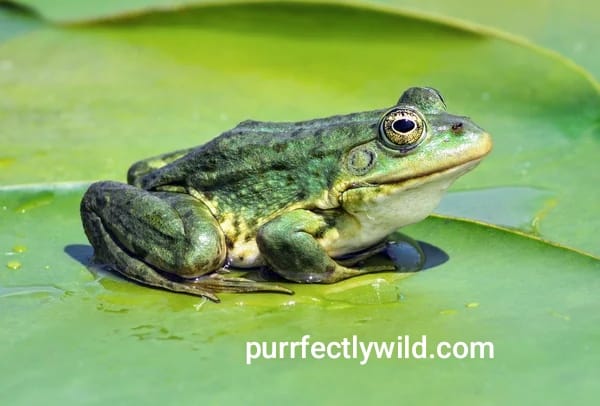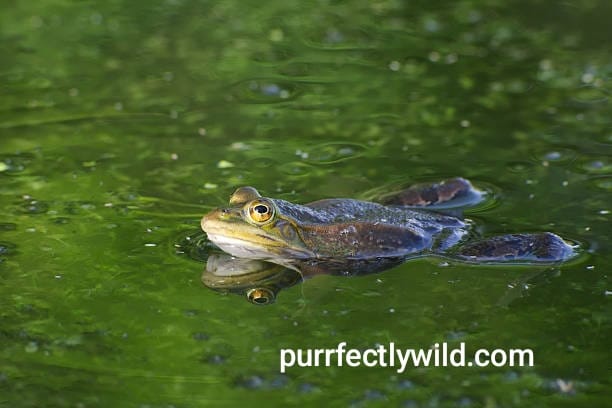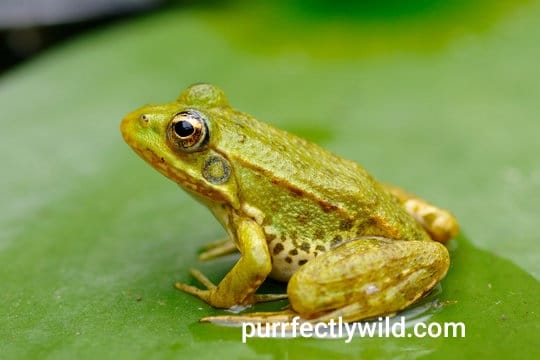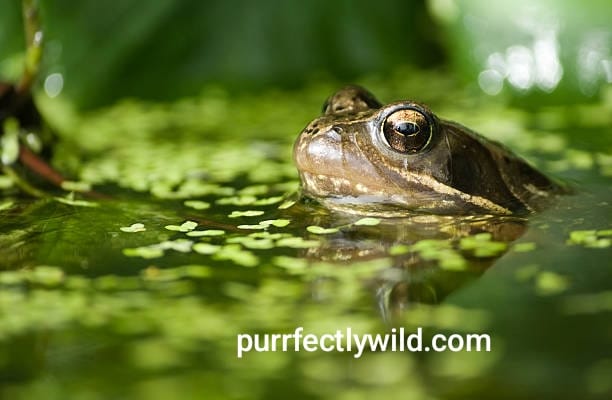Frogs are a strange class of Amphibians that have to live their whole life on water and whole another sort lives fully land. These places especially underwater where they can and must breathe is truly amazing. Fish need gills when they’re old, frogs don’t have them so when water surrounds the frog in some regions it must get creative! The secret lies in their unique respiratory mode — they can breathe through the skin and lungs.
So here is your answer to how do frogs breathe underwater as well what are the mechanisms behind their respiration that change with age, from tadpole stage into frog adult.
How do frogs breathe underwater and on land?
Frogs are always an interesting study for a veterinarian who has worked with every kind of animal. Some frogs have dual methods of breathing, making them especially well-suited to life both under the water and on land. Understanding how well they succeed at this in various environments gives a greater respect for their biology.
Here is also the case of frogs where most oxygen exchange between blood and water is through the skin. Their skin is thin and permeable, making it easy for oxygen to pass right through. When underwater, they take in oxygen from the water and give off carbon dioxide. This is necessary because their lungs, being relatively undeveloped compared to land animals.
What Are Amphibians and Why Are Frogs Included?
Frogs are an order of animals called amphibians, which my name sounds like its counterpart in ancient Greek. They have water appeal and land legs, hence the name. As frogs mature, their respiratory systems change making able to breath efficiently in water and air.
Tadpoles: Frogs are born as tadpoles, and during this time they mostly dwell in the water environments effectively from gills.
Amphibians like Frogs: Adult frogs, like tadpoles, start life with gills and live in water. However, as they grow and undergo metamorphosis, they lose their gills and develop lungs. Even as adults, frogs can still breathe underwater by absorbing oxygen through their skin.

Breathing Underwater as Tadpoles
Frogs live in water as tadpoles long before they turn into adults and their way of breathing is much different when compared to an adult frog.
1. Gills:
Gill Slits: The embryos also exhibit gill slits, through which water would pass to supply oxygen. These gills are found on each side of their head and vital for them to survive inside water.
Internal Gills: The gills of tadpoles are at first external but become internal and reminiscent in structure to those or fish as the young grow, Internal gills remain active until the tadpole undergoes metamorphosis into a frog.
2. Skin Respiration:
Cutaneous respiration, or breathing through their skin is possible for tadpoles as well. It is even more vital as adults, when they become frogs.
How Adult Frogs Breathe Underwater?
As frogs grow older, they lose their gills and gain a set of lungs. However, adult frogs have a further developed capacity to breathe through the skin that enables them to stay alive under water.

1. Cutaneous Respiration (Skin Breathing)
Oxygen Absorption Through Skin: A Adult froges can absorb oxygen directly through their skin which is thin and filled with blood vessels near the surface. This helps oxygen to move from water into frogs blood.
• Wet Skin: Frogs typically need to keep their skin damp, so that cutaneous respiration is functional. Frogs need to keep their skin moist by secreting mucus so they can breathe through their use it. If skin loses its moisture, the frog could die because it must absorb oxygen through its skin.
2. Lung Respiration:
Air Breathing on Land: Frogs also have lungs for use during land-dwelling breathing. Frogs have simple lungs made up of more capillaries than alveoli, and frogs fill their lungs on exhalation; they gulp air using the buccal pumping method.
Use limited underwater: When submerged, frogs usually shut their lungs and rely on skin breathing.Frogs have simple lungs that provide about half of their needed oxygen. They can only use their lungs when their skin is damp but not too wet, which helps them regulate gas exchange. However, they mainly rely on breathing through their skin for oxygen.
How Frogs Survive Underwater for A Long time?
Frogs have the ability to stay underwater for a long periods at once and many times you find them resting peacefully inside water — avoiding threats or hibernating. One challenge with fuel cells is their need for oxygen as a reactant. Most fuel cells require a constant supply of air, so they must have air pumped into them continuously.
1. Low Oxygen Demand When frogs are not moving or inactive their metabolic rate will slow down so they need less oxygen. It gives them the ability to survive on what little amount of oxygen they can filter in through their skin.
2. Frogs have thin, vascular skin that helps them absorb oxygen efficiently from water. The moisture on their skin allows oxygen to pass through easily, making it an effective way for them to breathe underwater.
3. In the Water: Many frog species are more well-suited for life in aquatic environments than others. An extreme example, the African clawed frog (Xenopus laevis), is entirely aquatic and utilizes cutaneous respiration for almost all of its oxygen intake.

Environment Breathing
Frog respiration is highly adaptive, using different methods based on their particular environments:
Under Water: Frogs can perform cutaneous respiration, where they take in oxygen directly through their skin while submerged.
On Land: Frogs rely almost entirely on their lungs to get air, so much of the oxygen frogs need is obtained through their skin when they live someplace wet.
While Hibernating: When frogs are hibernating they often bury themselves in mud or leaf litter and get all their oxygen by breathing through their skin. Metabolism drops a lot, and the need for oxygen lowres greatly.


